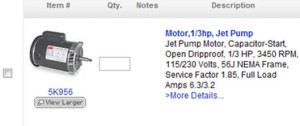by Greg Carter
Choosing the best electrical components for Motor Control can extend electrical life and offer dependable performance. So how do you choose between NEMA or IEC Style products? First, it helps to know the difference between NEMA and IEC.
IEC and NEMA Have Different Philosophies
NEMA offers robust configurations and selection covering larger breadth of applications, so selection can be simpler. IEC style focus on performance and application. Choosing IEC styles demands more product knowledge. For example, before choosing the right Allen Bradley IEC contactor or starter, you need to consider duty cycle, motor load and full load current. For a NEMA style, you may only need to know horsepower and voltage. Partly because of their limited application, IEC products cost less. Whereas NEMA styles are more general purpose. Replacement parts add thousands of dollars in replacement cost over the lifetime of equipment.
Servicing NEMA and IEC Styles
An upside to NEMA styles is maintenance. For example, electrical contactors and contactor kits can be serviced without removing them from the panel. Another IEC advantage is size. IEC starters are about half the size of their NEMA counterparts.
Replacement Parts Costs Mount Over Time
Something to consider when deciding on which style of components is replacement parts costs. Replacement parts add thousands of dollars in replacement cost over the lifetime of the equipment. Consider private label brands which can offer a savings of 25-33% and often match OEM performance.
According to Linda Mai, Branch Manager, City Electric Supply, “NEMA motor control products have replaceable parts. They are built to have a long life. You can replace the contacts, coils and auxillary contacts.
IEC – are the disposable products that usually have 1 to 3 million operations. They normally are about a third of the cost of a NEMA starter. They also have plug in overload units that are easily installed. Price definitely is a factor in the choice between the two”.
Find more reading on NEMA vs. IEC here: Electrical Construction and Maintenance.

Director, Business Innovation.
Electrical Marketing, LLC
email: gcarter@electricalmarketing.net
CONTACT US: 856.381.7834
eCommerce | Content Development | Strategy & Execution









